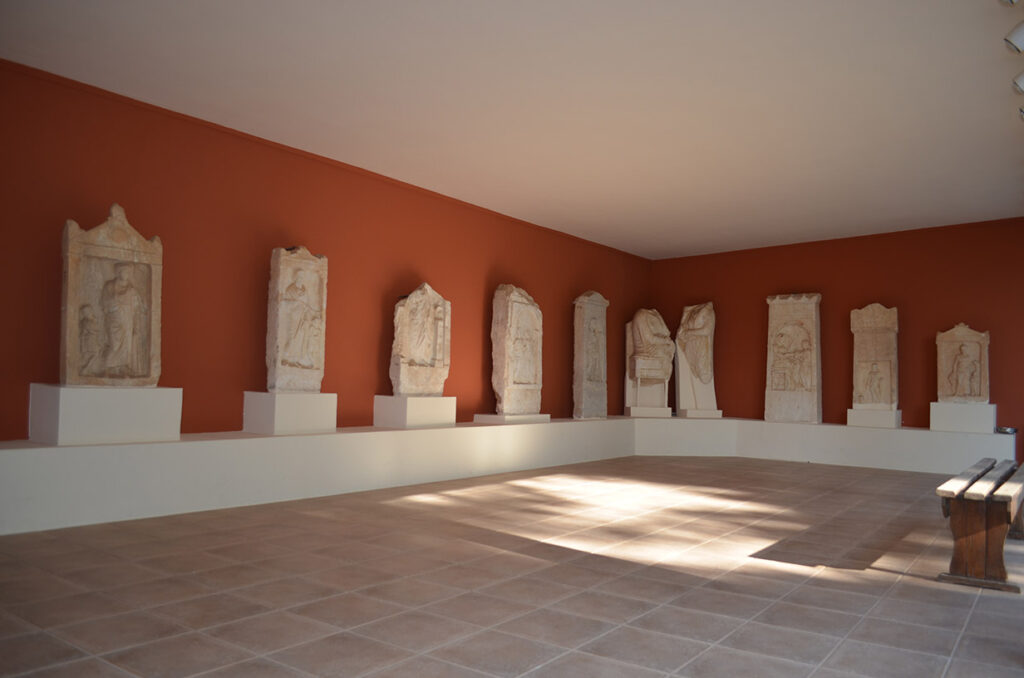Contact us
tel: +30 22290 60420
[email protected]
Address
Perifereiaki odos Chalkidas-Aliveriou, Evia, 34008
Opening season
We are open from 15th of April to 30th of September
tel: +30 22290 60420
[email protected]
Perifereiaki odos Chalkidas-Aliveriou, Evia, 34008
We are open from 15th of April to 30th of September

The Eretria Archaeological Museum was founded in 1960, but the current structure was expanded and renovated in 1989-1991 by the local Ephorate of Antiquities in collaboration with the Swiss School of Archaeology. The project was also funded by the latter.
The exhibits span all periods of antiquity and come from all over the world. The sculptures from the temple of Apollo Daphnephoros and the finds from the protogeometric cemeteries of Lefkandi and Eretria are among the most important.
Among the museum’s most important exhibits are: